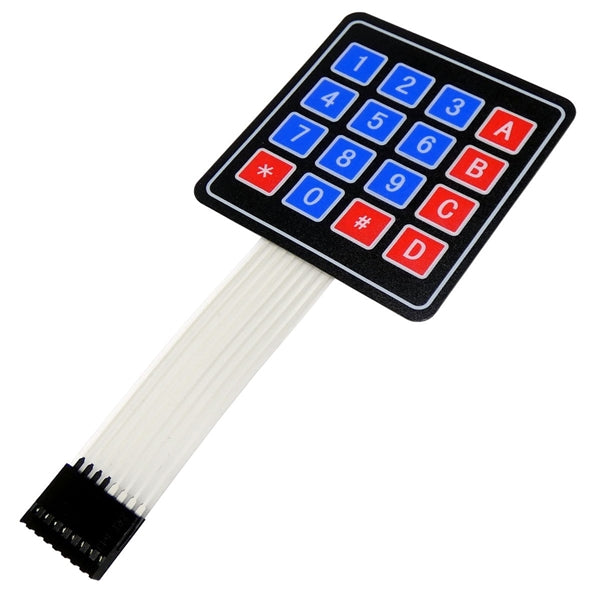The Advantages of Membrane Switches Over Mechanical Switches in Extreme Conditions
The Advantages of Membrane Switches Over Mechanical Switches in Extreme Conditions
Blog Article
Discovering the Perks of Membrane Layer Changes for Modern Electronics
The expedition of membrane layer switches in modern electronic tools uses a fascinating viewpoint on their myriad advantages, specifically in terms of style adaptability, sturdiness, and cost-effectiveness. These interfaces not just hold up against extreme environmental conditions but likewise provide a high level of modification, which is increasingly important in today's open market. As sectors remain to develop, the role of membrane layer switches in boosting customer experience and operational effectiveness warrants better assessment. Understanding exactly how these parts can shape the future of digital applications may expose understandings that might affect design and production strategies considerably.
Advantages of Membrane Buttons
Membrane layer buttons are increasingly favored in modern electronic devices because of their countless benefits. Among the primary benefits is their portable design, which permits space-efficient integration right into various tools. This slim profile not just saves space but likewise adds to the overall aesthetic allure of electronic items.
An additional benefit is their toughness. Membrane layer switches are normally immune to wetness, dust, and pollutants, making them excellent for usage in atmospheres where direct exposure to harsh problems is a problem. This resistance expands the lifespan of the switches, decreasing the requirement for constant substitutes and maintenance.
Moreover, membrane layer switches over offer outstanding responsive feedback, boosting individual experience. The tactile feedback is often made to give a gratifying sensation upon activation, which can boost customer contentment and efficiency.
Additionally, the manufacturing procedure of membrane layer buttons is economical, permitting reduced production expenses compared to traditional mechanical buttons. This cost makes them ideal for a wide variety of applications, from customer electronics to commercial machinery.
Design Versatility and Customization
The layout versatility and personalization options offered by membrane switches over even more boost their appeal in modern electronic devices. These buttons can be customized to fulfill certain aesthetic and functional needs, allowing manufacturers to develop gadgets that straighten very closely with brand name identity and user choices. With numerous choices in terms of shades, forms, and dimensions, membrane buttons can perfectly incorporate into diverse product styles, whether for consumer electronic devices, industrial applications, or medical gadgets.
Furthermore, the ability to include graphics and signs straight onto the button surface boosts functionality while lowering the demand for additional labeling. This combination not only simplifies production procedures however also adds to a sleeker total appearance. The style can be additional customized with functions such as backlighting, responsive responses, and multi-layer buildings, offering boosted customer communication.

Toughness and Environmental Resistance

In addition, membrane switches can be engineered to be chemically resistant, making them suitable for applications in industrial atmospheres where exposure to solvents and cleaning representatives is usual. The encapsulation of digital elements within the membrane framework gives added defense versus ecological anxieties, guaranteeing trusted efficiency even in difficult conditions.
Along with physical toughness, membrane switches exhibit exceptional resistance to UV light, stopping deterioration and discoloration gradually (membrane switch). This particular is especially valuable for outside applications, where prolonged exposure to sunshine can compromise various other button types
Eventually, the resilience and environmental resistance of membrane changes make them an optimal option for a wide variety of modern electronic tools, from clinical devices to customer electronic devices, making certain consistent capability and user contentment across various applications.
Cost-Effectiveness in Manufacturing
Cost-effectiveness in manufacturing is a significant benefit of membrane switches, making them a favored option for makers in various sectors. The production process of membrane layer changes typically involves less materials contrasted to traditional buttons, which reduces basic material prices. This structured manufacturing process not just conserves money yet likewise reduces waste, straightening with contemporary sustainability objectives.
In addition, membrane layer switches can be created utilizing automated strategies, permitting high-volume result with minimized labor expenses. The integration of advanced printing technologies additionally boosts performance, allowing suppliers to achieve detailed designs and capabilities without sustaining significant extra costs. This scalability ensures that manufacturing can adjust to altering market needs without jeopardizing quality or enhancing prices.

In addition, the lightweight nature of membrane layer switches adds to anchor cost savings in delivery and handling, along with in the total layout of electronic devices. By removing large parts, manufacturers can maximize the general product design, therefore boosting market competitiveness. Generally, the cost-effectiveness of membrane layer switches over not only benefits suppliers financially but also assists in innovation and rapid product development in the dynamic landscape of contemporary electronics.
Applications in Different Industries
Versatility stands apart as a trademark of membrane layer buttons, permitting them to discover applications across a vast array of sectors. In the healthcare field, these buttons are integral to medical devices, supplying user-friendly interfaces for tools like mixture pumps and analysis machines. Their resistance to moisture and very easy cleaning make them ideal for atmospheres calling for rigorous hygiene criteria.
In the automobile sector, membrane buttons contribute to the functionality of control panels and control panels, using a smooth, modern look while ensuring toughness against rough conditions. Their light-weight design additionally sustains general automobile effectiveness.

Furthermore, commercial equipment uses membrane buttons for operational controls. Their robust nature and customizable features deal with the particular needs of diverse applications.
Final Thought
Finally, membrane layer switches deal considerable advantages for modern-day electronic devices, consisting of layout versatility, resilience, and cost-effectiveness. membrane switch. Their personalized features and resistance to ecological aspects make them ideal for a variety of applications across various industries. As technological have a peek at these guys demands proceed to progress, the flexibility and efficiency of membrane layer changes position them as a crucial component in enhancing customer experience and driving advancement within the affordable landscape of electronic devices
Report this page